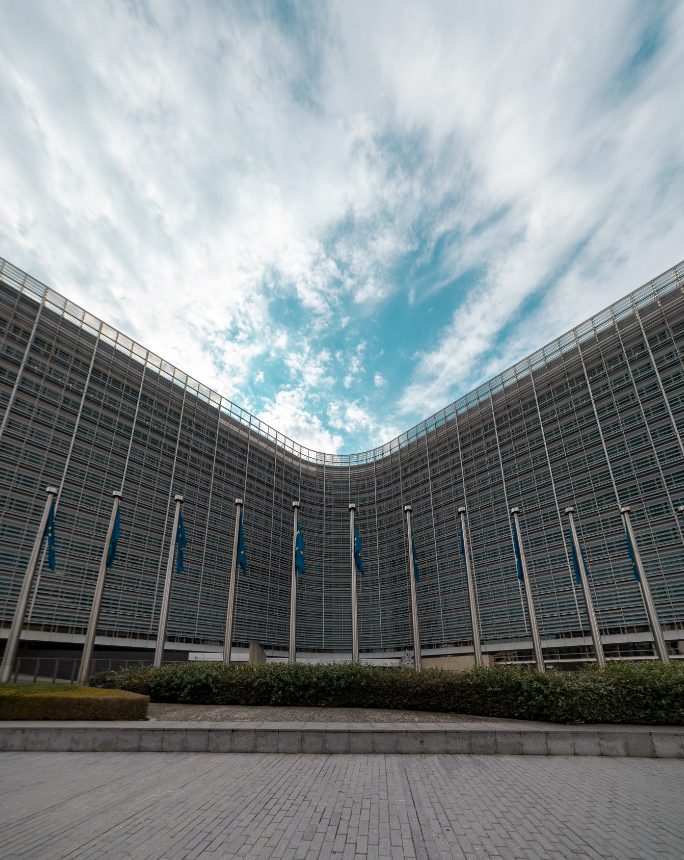In this Article
Dr Jane Nweike
What is the DLT Pilot Regime Regulation? Dr Jane Nweike explains in detail the EU’s newest regulation on crypto-assets and Distributed ledger technology (DLT). How does the European Parliament (EP) intend to regulate DLT market infrastructures? What does this mean for investment markets?
This article answers these questions and more! Feel free to get in touch with us on contactmkfintech@kyprianou.com for further queries.

Introduction
EU DLT Pilot Regime Regulation
Crypto-assets such as stablecoins and other cryptocurrencies (which operate as a store of value) do not qualify as financial instruments. However, other crypto-assets do qualify as financial instruments within their traditional meaning. These include stocks, bonds, and units of collective investment schemes as envisaged under existing EU financial regulations.
Distributed ledger technology (DLT) has been recognised by the European Parliament (EP) as having the potential to be applied by financial market participants such as MTFs and depositories in carrying out and settling trades of financial instruments.
The EP recognised that existing EU financial regulations pose several problems to crypto-assets that qualify as financial instruments and DLT. This is because such regulations were not drafted with such crypto-assets or DLT in mind. Consequently, the existing regulations are not suited for crypto-assets that qualify as financial instruments. In hindsight, existing regulations have had the unintended effect of stifling innovation in the use of DLT in financial markets. In addition, they do not adequately address the risks that are likely to arise from their use.
To solve this problem, the EP issued a regulation which creates a pilot regime for the use of DLT market infrastructure (the “DLT Pilot Regime Regulation”). The primary goal of the pilot regime is to test such infrastructure. The aims of the DLT Pilot Regulation are mainly to:
(i) temporarily exempt such DLT market infrastructure from rules in existing financial regulations which would discourage innovation in DLT.
(ii) Ensure that necessary safeguards are put in place for the use of DLT in financial markets.
(iii) Give ESMA and other competent authorities the opportunity to gain experience of DLT market infrastructures and financial instruments.
The DLT Pilot Regulation came into force on March 23, 2023.
DLT Pilot Regime Regulation Applicability
EU DLT Pilot Regime Regulation: Market Participants
The DLT Pilot Regulation applies to the following.
(i) multilateral trading facilities (MTFs).
(ii) Central securities depositories (CSDs).
(iii) Investment firms authorised under the Markets in Financial Instruments Regulation (MiFIR) and the Markets in Financial Instruments Directive (MiFID). Under the DLT Pilot Regulation, MTFs, CSDs, and investment firms which are already authorised and operating may apply to the competent authority for specific permissions to operate DLT market infrastructures. They may also apply for exemptions from certain provisions of the MiFIR, MiFID and other relevant financial regulations. New entrants may also submit simultaneous applications for authorisation under the relevant regulation or directive, and for a specific permission under the DLT Pilot Regulation.
DLT Pilot Regime Regulation Applicability
EU DLT Pilot Regime Regulation: Financial Instruments
Only the following financial instruments can be admitted to a DLT market infrastructure.
(a) Shares, the issuer of which has a market capitalisation, or a tentative market capitalisation, of less than EUR 500 million;
(b) Bonds, other forms of securitised debt, including depositary receipts in respect of such securities, or money market instruments, with an issue size of less than EUR 1 billion, excluding those that embed a derivative or incorporate a structure which makes it difficult for the client to understand the risk involved.
(c) Units in collective investment undertakings covered the market value of the assets under management of which is less than EUR 500 million.
What DLT Market Infrastructure does the DLT Pilot Regulation Envisage?
EU DLT Pilot Regime Regulation
The DLT Pilot Regulation envisages three kinds of DLT-based market infrastructure.
(a) A DLT Multilateral Trading Facility (DLT MTF).
(b) A DLT settlement service (DLT SS).
(c) A DLT trading and settlement service (DLT TSS). These DLT market infrastructure should only admit DLT financial instruments (as outlined above) to trading or record.
Under the DLT Pilot Regulation, the activities of a DLT MTF should be undertaken by a multilateral trading facility (MTF). Furthermore, it should be authorised under MiFID and obtain specific permission from the competent authority to operate a DLT MTF
A DLT SS, on the other hand, should be a central securities depository (CSD) that is licenced under the CSD regulation and has obtained a specific permission under the DLT Pilot Regulation to operate a DLT SS.
The DLT TSS combines the functions of DLT MTFs and DLT SSs; a new concept under EU financial regulations. The DLT Pilot Regulation clarifies that the combination of these two functions, though generally required to be performed by separate entities due to concerns about competition and concentration of risk, is being permitted only in this circumstance due to the efficiencies to be derived by DLT. A DLT TSS may operate under a licenced investment firm or a CSD that has obtained specific permission to operate.
Notably, these DLT market infrastructure may be operated not only by incumbents, but also by new entrants. Such new entrants will need to apply for authorisation under the relevant regulation to operate an MTF, a CSD, or an investment firm (as the case may be) and simultaneously apply for permission under the DLT Pilot Regulations to operate a DLT market infrastructure.

What exemptions are available for DLT market infrastructures under the DLT Pilot Regulation?
EU DLT Pilot Regime Regulation
– permission to admit both natural and legal persons to deal on their own account as members or participants, provided they meet certain criteria (e.g. they are of good repute, etc.); and
– an exemption from article 26 of the MiFIR, which requires investment firms that deal in financial instruments to report details of their transactions to the competent authority no later than the close of the following working day. However the DLT MTF will still be required to maintain records of its transactions.
A DLT SS may apply to a competent authority for the following exemptions from the CSD regulations.
- Permission to admit both natural and legal persons to deal on their own account as members or participants.
- Exemption from Article 2(1) points (4), (9) and 28. These are the definitions of ‘dematerialised form’, ‘transfer order’ and ‘securities account’.
- Exemption from Articles 3, 37 and 38. These deal respectively with recording of securities in book-entry form, reconciliation of securities issues and keeping of records and accounts.
- Exemption from Articles 6 and 7. These require CSDs to establish procedures to facilitate the settlement of transactions in financial instruments, prevent settlement failures, and address such failures when they occur.
- Exemption from Articles 33, 34 and 35. These require CSDs to disclose their rules on participation, and deal with CSDs’ duties of transparency and communication with participants.
- Exemption from Article 39, requiring CSDs to disclose their rules on finality of transfers.
- Exemption from Article 40, which deals with cash settlement.
- Exemption from Article 50, 51 and 53, These deal with access between CSDS, and between CSDs and other market infrastructure.
A DLT TSS is subject to the same requirements as an MTF and a CSD. It may also apply for the exemptions provided for MTFs and CSDs.
How to apply for a specific permission to operate a DLT Market Infrastructure?
EU DLT Pilot Regime Regulation
The applicant will be required to submit an application together with the following.
– A business plan.
– The rules of the market infrastructure.
– A description of the DLT and other cyber and IT arrangements.
– Evidence of sufficient prudential safeguards.
– Details of safekeeping arrangements for clients’ financial instruments.
– Details of the exemptions being sought.
It should be noted that applicants will be required to also provide details of their transition strategy. This is due to the fact that the DLT Pilot Regulation requires the operator of a DLT market infrastructure to transition/reverse its DLT infrastructure to traditional market infrastructure in the event that (i) the aggregate value of financial instruments admitted to the DLT market infrastructure exceeds EUR 9 billion; (ii) the specific permission is withdrawn; (iii) or the applicant voluntarily ceases operation of its DLT infrastructure
How Can We Help?
MK FINTECH PARTNERS
MK Fintech Partners can provide you with the advice and preparation you need to submit an application with the securities supervision team at the Malta Financial Services Authority (MFSA) to become authorised to operate under the DLT Pilot regime regulation. Give us a shout on contactmkfintech@kyprianou.com for any support you may need.
More about MK Fintech Partners Ltd.
Michael Kyprianou Fintech Partners Ltd. is a Maltese company providing services in the FinTech sector. It comprises a team of dedicated experts who provide services such as Legal Advisory, Crypto Licensing, Token Issuers’ Licensing, Investment Services Licensing, and registrations of activities related to Fintech, Crypto, Blockchain & Data Protection, Investment Funds Services & Banking, Company Incorporations, and M&As.
MK Fintech Partners forms part of the Michael Kyprianou Group, a top tier international legal and advisory firm. It has established an enviable reputation as a broad-based legal practice over the years. Mainly by keeping at heart its principle to always exceed its clients’ expectations. MK has grown to become one of the largest law firms in Cyprus with offices in Nicosia, Limassol and Paphos. The MK Group’s international presence also includes fully-fledged offices in Greece (Athens and Thessaloniki), Malta (Birkirkara), Ukraine (Kiev), the United Arab Emirates (Dubai), United Kingdom (London), Israel (Tel Aviv), and Germany (Frankfurt).
The content of this article is valid as at the date of its first publication. It intendeds to provide a general guide to the subject matter and does not constitute legal advice. We recommend that you seek professional advice on a specific matter before acting on any information provided. For further information, contact us at MK Fintech Partners via email at contactmkfintech@kyprianou.com or by telephone +356 2016 1010.




